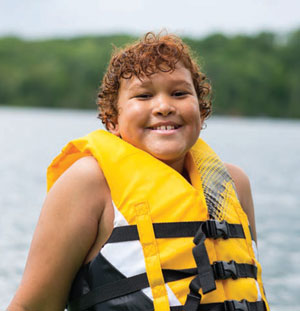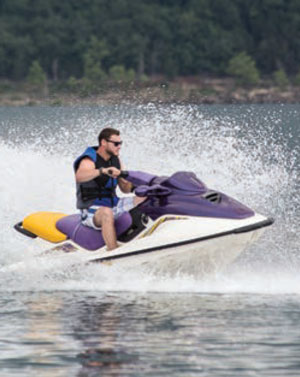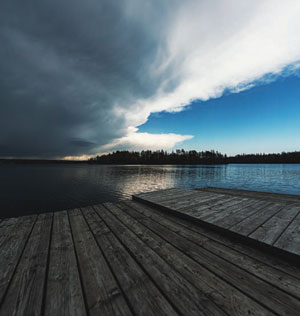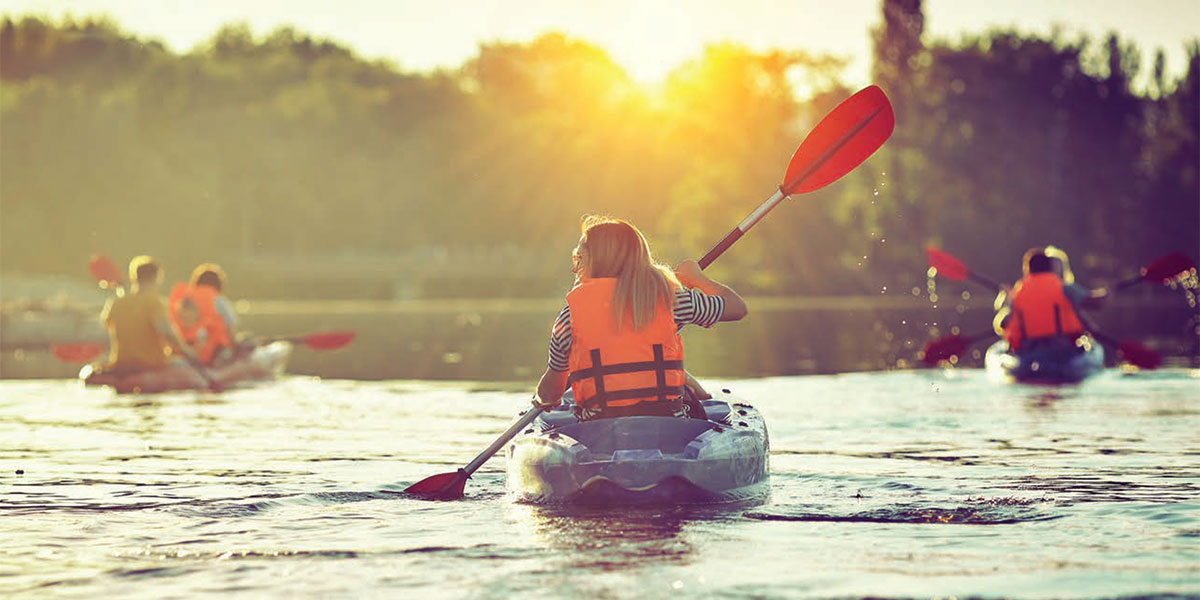Be Prepared and Use These Tips to Ensure a Great Day On the Lake
Smith Mountain Lake offers an idyllic backdrop for recreational activities on the water. From boating and fishing to kayaking and jet skiing, there’s no shortage of how to enjoy the water.
However, safety should always be the top concern when venturing out onto the lake. While no one likes to think about safety concerns when having fun with friends and family, a great day on the lake can quickly become the opposite without some preparations.
 Life jackets
Life jackets
Life jackets keep you afloat in case of an accident and could mean the difference between life and death. According to the Virginia Department of Wildlife Resources (DWR), all children under age 13 must wear a Coast Guard-approved life jacket while on a boat, and the boat should have one life jacket per person on board.
Life jackets come in three types: Type I life jackets are best for offshore and are designed to turn an unconscious person face-up in the water; Type II life jackets are for calm inland waters and will turn some unconscious wearers face-up; Type III life jackets are intended for conscious, competent swimmers in calm waters. For most recreational boating and water activities found at Smith Mountain Lake, Type II or Type III life jackets would be the ones to choose.
Follow these tips from DWR to ensure a proper fit:
- Check the manufacturer’s label for information on size and type of use.
- Try on the life jacket to check fit, which should be snug but not tight. Life jackets should not ride up over the chin or ears when in the water.
- Fasten the straps and buckles. Check for wear and tear.
- Lift your arms over your head. If you can turn your head left, right and over your shoulder, you have proper movement. But if the life jacket rides up to your chin or gets in the way of moving your head, it’s too large.
- To test a child’s life jacket, have them stand with their arms at their sides while you tug up on the jacket by the shoulders. If the jacket moves higher than the child’s ears, it’s too big and the child could slip out.
 Boating safety
Boating safety
Though a key component, water safety goes beyond just wearing the right life jacket. For boaters, understanding the rules of the water — right of way, speed limits and licensure requirements — is vital to avoiding accidents and conflicts and to ensuring enjoyment for everyone.
Smith Mountain Lake had the most boating incidents of any body of water in Virginia in 2022, according to a report from WDBJ7.com. With increased adherence to no-wake zones, speed limits, no-alcohol consumption, staying to the right of the channel and passing boats properly, boaters can help make the lake safer for everyone.
All operators of boats with a motor of 10 horsepower or greater registered in the state of Virginia must take a boat safety course, according to DWR. Classes are available throughout the year and are free; check availability on the DWR website. Once completed, boaters must carry their license with them when operating their watercraft.
The Smith Mountain Lake Boating Association’s website has additional information on resources, regulations and boater education courses. It’s important to stay up to date on boater safety, such as knowing the 2023 law requiring boaters to slow to a no-wake speed when they are within 200 feet of a law enforcement or emergency vessel displaying flashing lights.
Boaters also need to be mindful of individuals on personal watercrafts (PWC) such as jet skis, kayaks and paddleboards, and boaters should not pull tubes in high traffic areas of the lake. Passing a paddleboarder, for example, on a boat or jet ski and creating a high wake is a recipe for an incident.
 Personal watercraft
Personal watercraft
Jet skis, kayaks and paddleboards are popular at Smith Mountain Lake, but operating them comes with rules and responsibilities, too.
Just like on highways, motorized PWC operators must adhere to speed limits, maintain a safe distance from other watercraft and obey right-of-way rules. For those on non-motorized PWCs, it’s advisable to stay close to the shoreline to avoid wakes from motorized watercrafts and boats.
Smith Mountain Lake features many inlets and quieter sections that are perfect for those who enjoy paddling.
 Weather 101
Weather 101
While no one likes to think of it, emergencies can arise when you’re out on the water. And if they do happen, it’s best to know how to respond.
If a storm approaches, get everyone back onto the boat if they are swimming, tubing or using a personal watercraft. Make sure everyone is wearing their life jackets. If you can’t get back to your own dock or where you launched, head to the closest, safe, public dock immediately, and seek shelter away from the lake. Those on personal watercrafts – jet skis, kayaks, paddleboards — should also be wearing life jackets and head to the closest, safe shoreline or dock for shelter away from the lake.
Your time on and around the lake should be focused on making lasting memories, not tending to emergency situations. Use these safety tips to help ensure your fun in the sun. ✦

